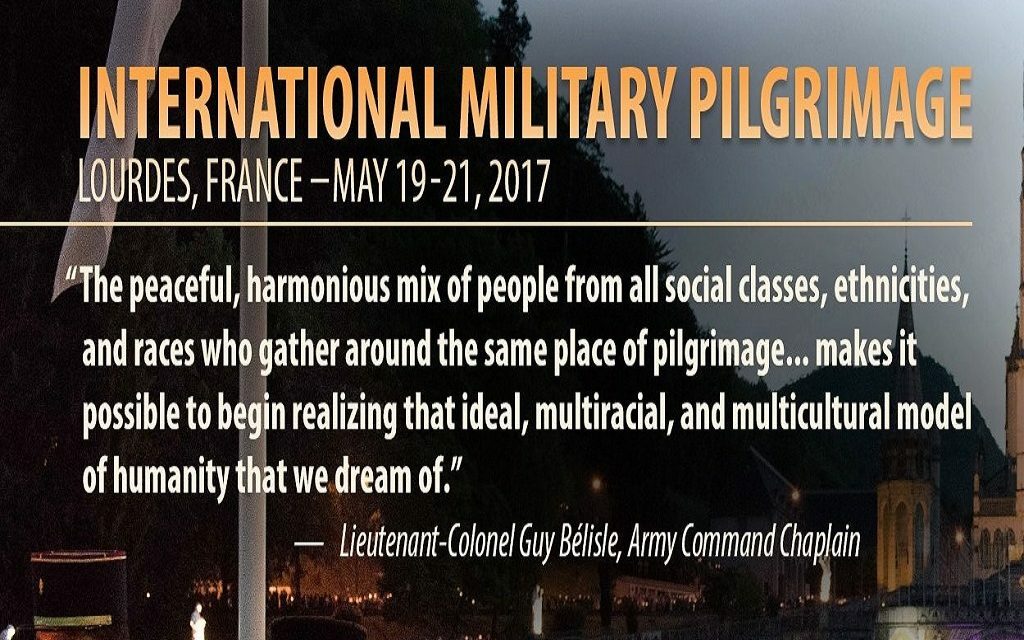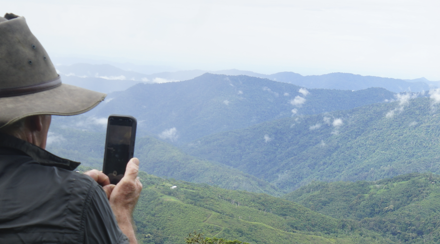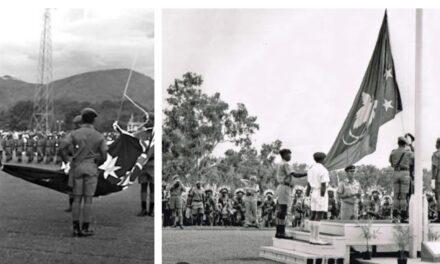‘Just a day’s travel from Sydney, Melbourne or Brisbane and you can be on the Kokoda Trail.
‘At the foot of the Owen Stanley Ranges in Papua New Guinea you can look into the ancient landscape – majestic peaceful wilderness, nature in its full glory.
‘There have been tracks across the mountains for thousands of years – the people who inhabit the region were gardening at the same time agriculture was developing in Ancient Egypt. The strength of natural and cultural heritage are beyond simple words; fascinating, awesome, daunting – world class.
‘Yet the battles of 1942 and the contemporary interest in ‘Kokoda’ are what have made it Papua New Guinea’s No.1 tourist attraction.
In 1942 it was Australians and Papua New Guineans fighting Japanese for what was then Australian land. Young men in a bloody struggle for ‘their land’. The battle has become folklore in Australia – a place of pilgrimage like Gallipoli, Villers-Bretonneux, Sandakan, Passchendaele.[i]
More than 65,000 Australians from all walks of life have experienced the Kokoda pilgrimage since the since the 50th anniversary of the Kokoda campaign in 1992.
Kokoda has emerged as the complete adventure experience for boomers and young adventurers. It requires physical stamina and mental tenacity. The wartime history evokes strong emotions. The unconditional care and support of local PNG guides and villagers is humbling. The environment is rugged, remote, and pristine.
But equally important is a desire for a brief escape from the intrusion of government and social media into the bustle of our daily lives.
These motivations are identified in a recent book, ‘Pilgrimage – Journeys of Meaning’ which provides an insight into the potential of wartime tourism in the modern world and the paradox of pilgrimage. Author, Peter Stanford, ponders:
‘Why in our otherwise markedly secular and sceptical times, especially in the developed world where numbers of those who describe themselves as religious is in rapid decline, are people actively seeking out places whose history is soaked in the sort of faith that is anathema to them?’
The author concludes:
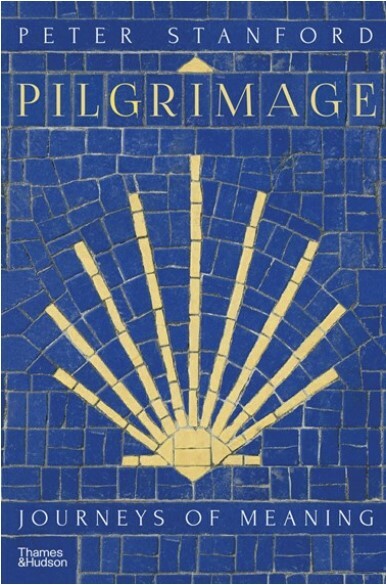
‘The standard answer I was given many times is that tourism is the new religion, and that pilgrimage is just a new name for tourism.‘For pilgrimage read adventure holiday, and for pilgrim read hiker.
‘Pilgrimage is a word that should be used with care, not thrown around lightly in glossy travel brochures. It signals more than a ramble through foreign countryside with friends more than a chance to get healthy and do some sight-seeing into the bargain.
‘Walking along a pilgrim road opens us to a legacy that reaches beyond firmer muscles and toned bodies. Significant numbers of those who walk the Camino, and who are among the more than 50 percent of them who disclaim the label of religious, nonetheless talk of how the experience leaves them changed.
‘Pilgrimage, past and present, has to be seen as a sub-section of a bigger and even longer human impulse that might be called ‘walking with a purpose’.
‘Today that has been amended. The effort of 21st century pilgrimage directs thoughts inwards, as mountains are climbed, kilometres clocked up and blisters endured. Everything is done at walking pace, in contrast to a world that, now more than ever, is ceaselessly rushing ahead faster that we can quite compute. So, on pilgrimage progress can also be measured in self-exploration and self-knowledge.
‘There are many roads, but pilgrimage is less extreme, more mainstream, than many – though it is still quirky enough to raise an eyebrow. ‘You! Going on pilgrimage? I’d never have suspected.’ With its long history, and extraordinary spiritual geography, it continues to lend itself to the search for meaning.’
Papua New Guinea lends itself to such a ‘search for meaning’ as it is the custodian of land sacred to the shared military heritage for pilgrims from Australia, Japan, and the USA.
A niche wartime tourism industry beckons beyond the Kokoda Trail to Rabaul, Milne Bay, Bougainville, Buna-Gona, Shaggy Ridge, Black Cat Track, Markham Valley, Ramu Valley and Finisterre Ranges.
The most relevant guide to the potential of a wartime tourism industry in PNG is the continued growth in those making the annual pilgrimage to Gallipoli.
Each year up to 9000 Australians visit the Dawn Service at Anzac Cove – thousands more visit it at other times of the year. It is also becoming a pilgrimage for more than a million Turkish people also visiting Gallipoli each year.
PNG battlefields and war cemeteries which are closer, cheaper, and just as meaningful attract around 3000 Australian visitors. This is despite the fact that at Gallipoli we fought for Britain, and lost – but at Kokoda we fought for Australia and won!
Pilgrimage tourism is not restricted to trekkers. It has the capacity for wartime cruises to Port Moresby, Milne Bay, Lae, Madang, Wewak, Aitape, Manus, Rabaul, Bougainville and the Solomon’s.
Imagine an Anzac Dawn Service at Owers Corner; a showcase of PNG culture along Ela Beach; a ‘Beating-of-the-Retreat’ at Bomana War Cemetery followed by a 7-day Pacific War Cruise to each of the significant coastal/island battlesites!
The most important challenge for PNG is to develop a sustainable model that can be applied to each area. The rapid development of Kokoda tourism provides a timely opportunity for a case study as the basis for developing such a model for wartime pilgrimage tourism.
But first there needs to be an understanding of the values and needs of pilgrims relating to authenticity, safety, governance, and service efficiency.
Pilgrimage, a global ritual embraced by all faiths, is one of the most enduring traits in our human story. In this compelling history Peter Stanford reflects on the reasons people have walked along the same sacred paths across the ages. How do the experiences of the first pilgrims to Jerusalem, Mecca and Santiago de Compostela compare to the millions of people who embark upon life-changing physical and spiritual journeys today? And why do we still feel compelled to walk, stop and think about our lives?
Pilgrimage explores sacred landscapes across the world, the 88 temples on the island of Shikoku in Japan, to the monolithic rock-cut churches of Lalibela, Ethiopia and the riverbanks of the Kumbh Mela in India. These journeys are to places of healing and reflection, but also to sites of danger and even violence, at crossroads where different political and religious tensions meet. While pilgrimage is viewed as an escape from the everyday to refocus the mind and soul, struggles for power and social upheaval have always had an impact on the way pilgrims experience their own personal journey.
Peter Stanford guides us through the history of pilgrimage, its meanings and experiences today, as a new generation seeking solace, clarity and wonder follow in the footsteps of travellers from the past.
LINKS:
- Prooosed Joint Understanding for the Commemoration of the Shared Wartime Heritage between PNG and Australia
- Funding Proposal for a Military Heritage Master Plan for the Kokoda Trail
- Proposal for ‘Kokoda Day’
- A Blueprint for Kokoda Pilgrimage Tourism
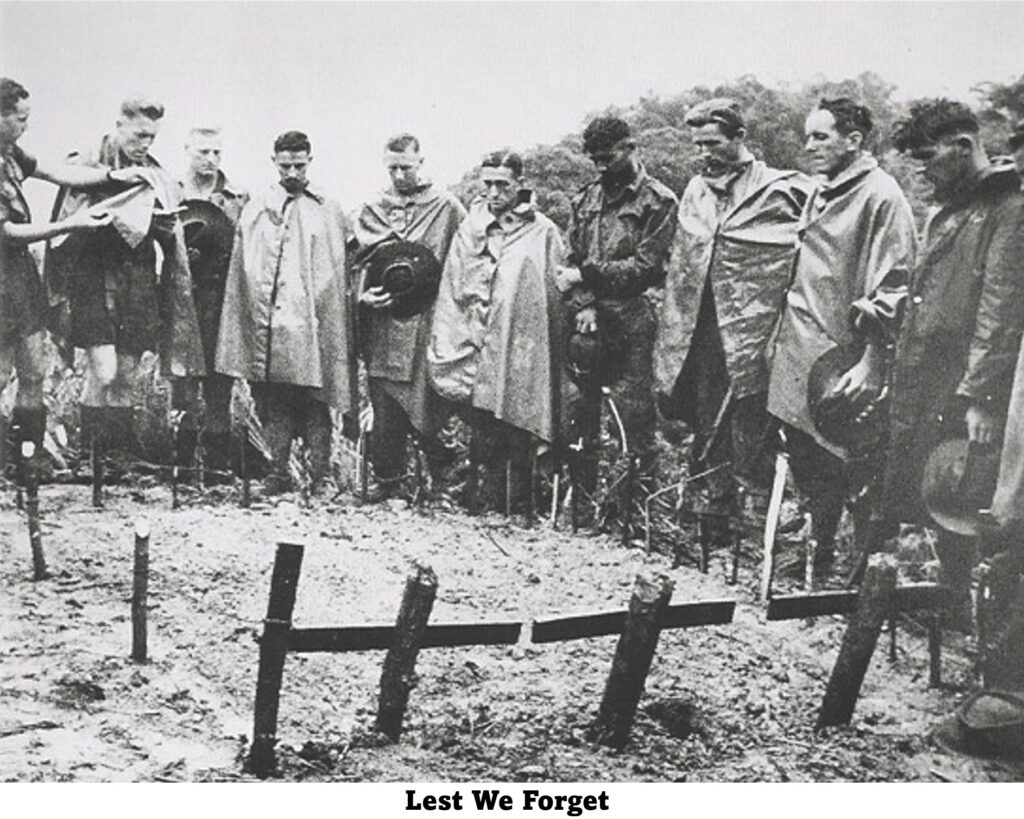
[i] Michael Pender, Military Heritage Architect, HPA Projects

